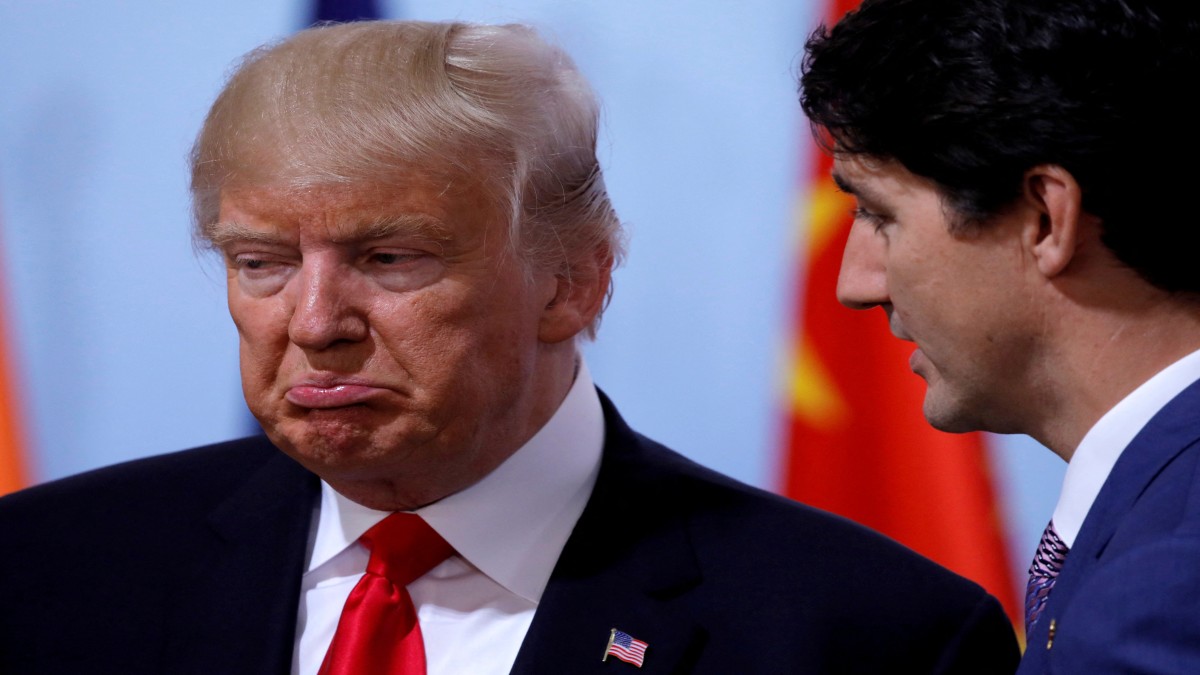Soon after US President Donald Trump returned to power, he threatened to impose a 25 per cent tariff on its exports.
As a result, Canadian officials in Washington used creative tactics to persuade the Trump team to refrain from imposing the tariffs aimed at improving border security.
The ministers and diplomats are in the US capital to speak with Republican lawmakers, according to a Bloomberg report.
Here’s all we know about it.
Canada’s video diplomacy
Senior Canadian ministers in charge of immigration, public safety, and foreign affairs have turned to various lobbying methods to convince the Trump 2.0 administration that his concerns about illegal immigration are serious.
To highlight their commitment, the officials used video footage of newly bought Black Hawk helicopters to serve in border patrols to address Trump’s claims of illegal migration.
In a private exchange, Trump’s choice for commerce secretary, Howard Lutnick, received a video from Finance Minister Dominic LeBlanc that featured time-lapse visuals of a border region.
According to Bloomberg, which quoted an anonymous source with knowledge of the situation who spoke about the private conversation, the video was intended to demonstrate the low number of people entering the US illegally.
A Fox News TV team was asked by Premier Danielle Smith of Alberta to document Canadian police patrolling the portion of the province’s border with Montana.
Canadian Prime Minister Justin Trudeau told reporters that the government is showing the Trump administration that they have a “strong partner” in upholding border security.
“Our border is safe and secure, and less than one per cent of fentanyl and illegal crossings into the US come from Canada. We’re committed to keeping it that way by addressing our current challenges and strengthening our capacity,” Trudeau said.
Trudeau said tariffs would have “disastrous consequences” for the US, putting American jobs at risk and causing prices to rise. Trudeau reiterated that less than one per cent of fentanyl and illegal crossings into the US come from Canada.
Without providing specifics, the prime minister also stated that Canada is prepared to retaliate should the US impose a tariff of 25 per cent on Canadian products.
“We’re ready with a response, a purposeful, forceful but reasonable, immediate response. It’s not what we want but if he moves forward, we will also act,” Trudeau said.
Also read: How Trump 2.0 presents a unique blend of challenges and opportunities
Trump’s tariffs on Canada, Mexico and China
White House Press Secretary Karoline Leavitt told reporters earlier Friday that Trump will move ahead with plans on Saturday to impose 25 per cent tariffs on Mexico and Canada and a 10 per cent levy on China .
The move aims to stop “illegal immigration” and the smuggling of chemicals used for fentanyl.
The US president, who is just two weeks into his second term, has also pledged to use tariffs to boost domestic manufacturing and raise revenues for the federal government.
Speaking to reporters in the Oval Office later, Trump said there was nothing the three countries could do to prevent the tariffs from going into force Saturday.
Trump had said he was weighing issuing an exemption for Canadian and Mexican oil imports.
He said that he was considering a lower tariff rate on oil, but it was unclear if that lower rate would be in place when he signs the order Saturday.
″I’m probably going to reduce the tariff a little bit on that," Trump said of oil. “We think we’re going to bring it down to 10 per cent.”
The president also said more tariffs were coming, though he offered few specifics.
“We’re going to put tariffs on (computer) chips, we’re going to put tariffs on oil and gas. That’ll happen fairly soon, I think around February 17,” Trump said, also promising tariffs on copper and the European Union.
Also read: 'Find another sucker nation': Trump threatens Brics with tariffs again. What's at stake for India?
Illegal fentanyl in the US
The majority of illegal fentanyl in the US is smuggled into the country through Mexico, although some also come through Canada.
Similar to America, Canada is also dealing with an opioid crisis that has resulted in tens of thousands of fatalities.
Both nations have the highest opioid consumption rates per capita worldwide.
Although it does not seem to be a significant supplier to the US, Canada has seen an increase in domestic fentanyl production in the wake of the COVID-19 outbreak, serving both domestic and foreign markets.
US Customs and Border Protection statistics shows that last year, around 50 pounds of fentanyl were confiscated by US officials at the Canada-US border, whereas 20,600 pounds were recovered at the Mexico border, as per Mint.
The increase in Canadian production was influenced by a number of factors, including the Chinese government’s decision to declare fentanyl as a restricted substance in 2019, border closures during the COVID crisis, and access to the precursors needed to create the final products.
Illegal groups started sourcing the precursors and making fentanyl locally instead than smuggling it in pill form from overseas.
Risks involved
But there are both political and economic risks involved for Trump.
Many voters backed the Republican on the promise that he could tamp down inflation, but the possibility of tariffs could trigger higher prices and potentially disrupt the energy, auto, lumber and agricultural sectors.
“We should be focused on going hard against competitors who rig the game, like China, rather than attacking our allies,’’ Democratic Senate Leader Chuck Schumer of New York, was quoted by The Associated Press. “If these tariffs go into full effect, they will raise prices for everything from groceries, to cars, to gas, making it even harder for middle-class families to just get by.”
With inputs from agencies


)

)
)
)
)
)
)
)
)



